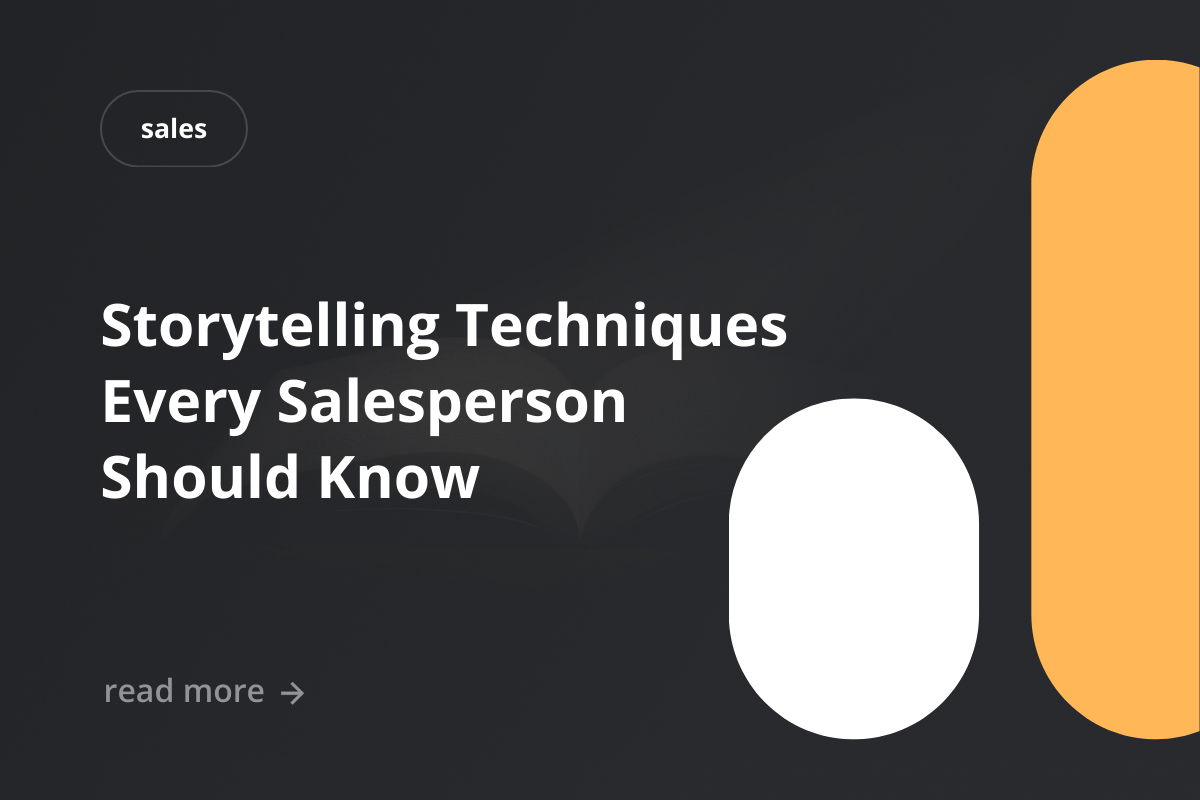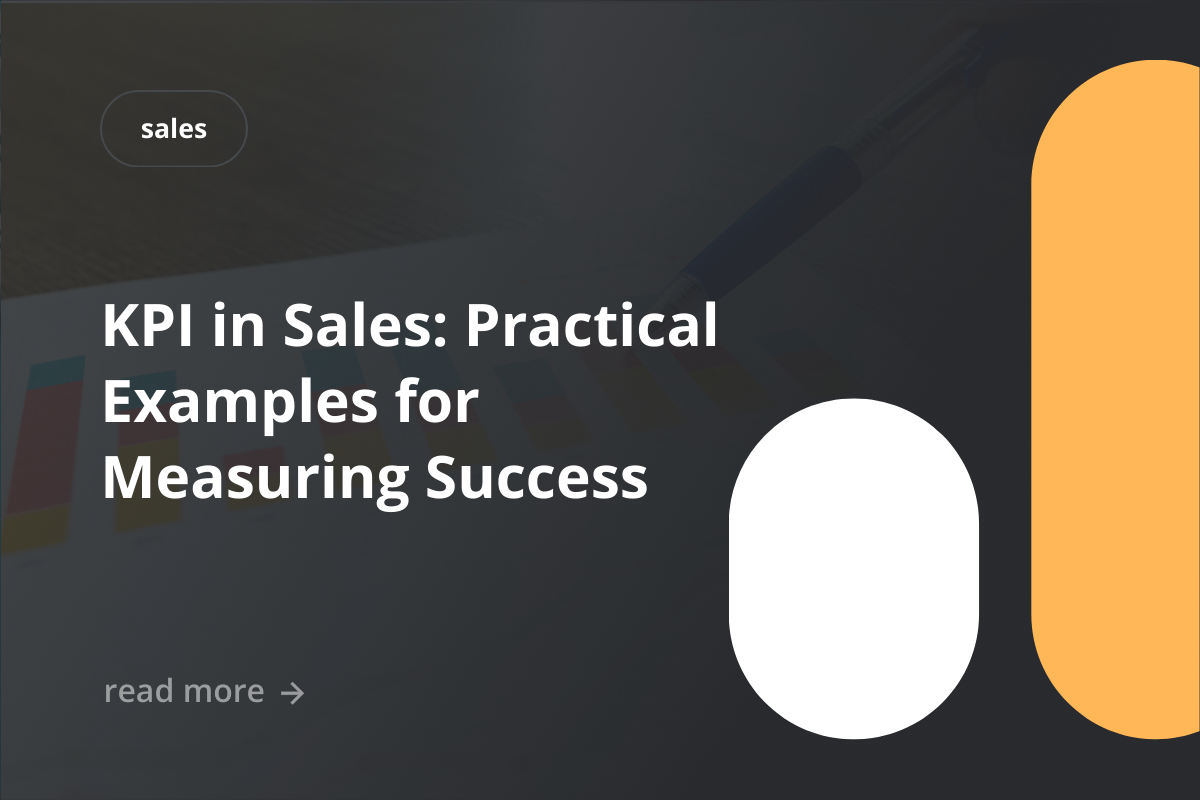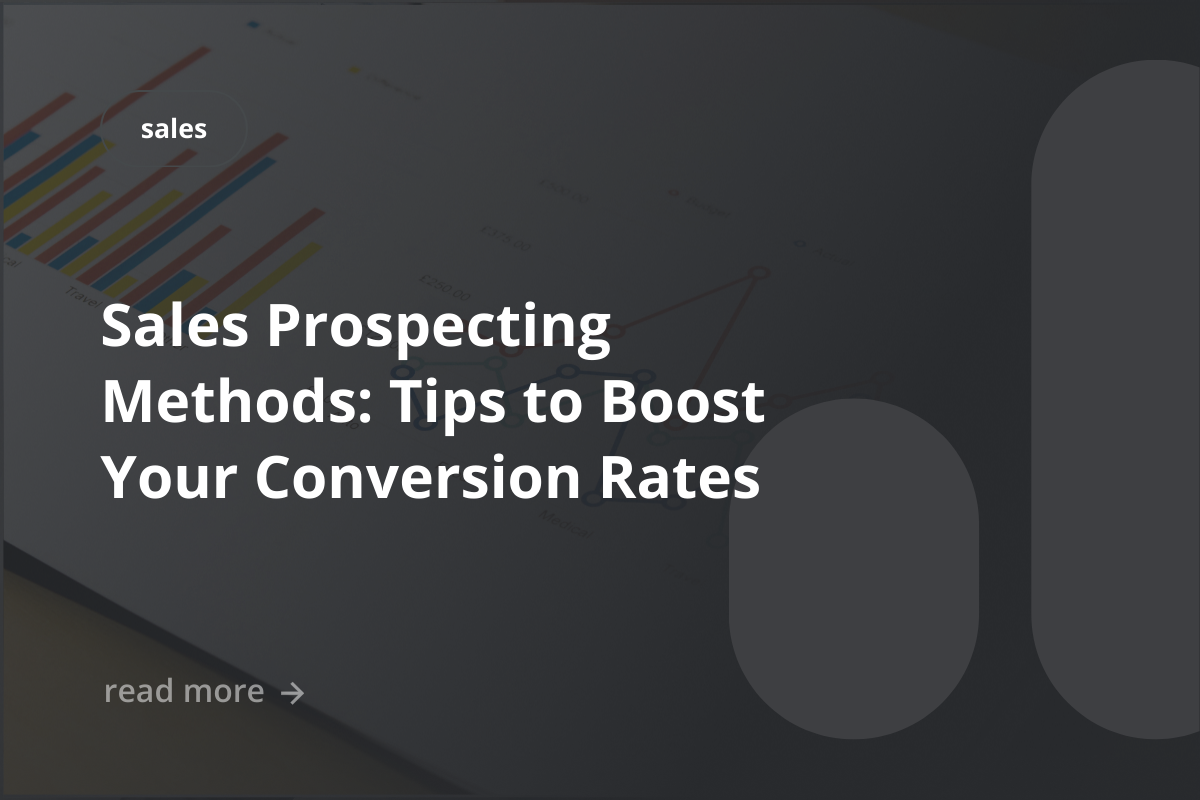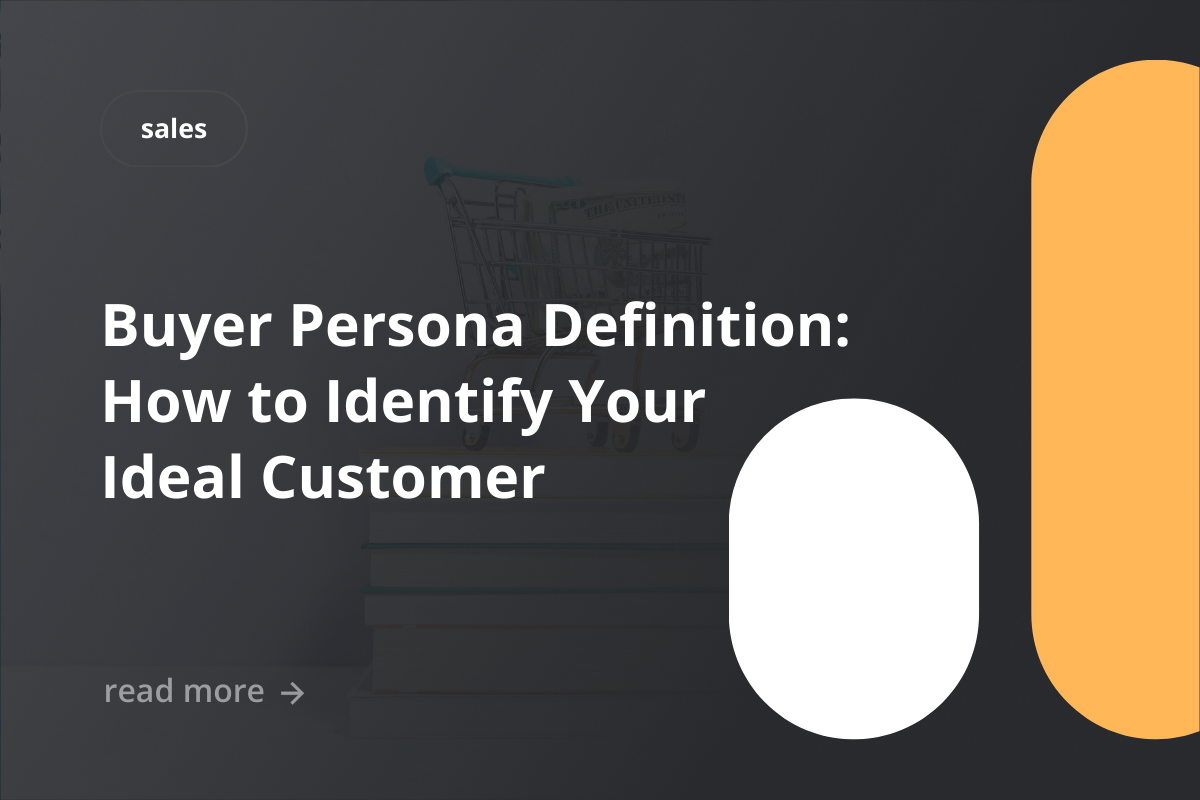


AI in Sales and Its Impacts
AI in sales is revolutionizing how businesses approach their sales strategies and operations. The integration of artificial intelligence in sales processes enables companies to analyze vast amounts of data and derive actionable insights that drive better performance. As a result, organizations can enhance their customer interactions and improve overall sales effectiveness.
The Role of Artificial Intelligence in Sales
The role of artificial intelligence in sales extends beyond automation; it encompasses smart decision-making and predictive analytics. Artificial intelligence in sales helps identify potential leads and prioritize them based on their likelihood to convert.
This alignment ultimately accelerates the sales cycle and increases overall revenue.
How Artificial Intelligence in Sales Boosts Efficiency
Artificial intelligence in sales boosts efficiency by automating routine tasks and freeing sales teams to focus on high-value activities. By streamlining processes such as data entry and follow-ups, sales teams can spend more time engaging with customers. This leads to shorter sales cycles and improved customer satisfaction.
Trends in AI Software Development for Sales
The landscape of artificial intelligence software development for sales is rapidly evolving, with new tools and technologies emerging regularly. Current trends emphasize the importance of data privacy, user-friendly interfaces, and integration with existing sales platforms.
Staying updated with these trends ensures companies leverage the full potential of artificial intelligence in sales.
How AI Tools Transform Sales Strategies

Sales AI tools are increasingly becoming essential for businesses seeking a competitive edge. These tools provide real-time insights into customer behavior and preferences, enabling sales teams to tailor their approaches effectively. By analyzing data, sales AI tools allow for informed decision-making, transforming traditional sales strategies.
Sales AI Tools for Better Insights
Implementing sales artificial intelligence tools can lead to deeper insights into market trends and customer patterns. Teams can leverage these insights to:
- Identify high-value opportunities in the sales funnel.
- Optimize marketing strategies to target specific demographics.
- Monitor competitor activities and adjust strategies accordingly.
Integrating AI for Personalized Selling
The integration of AI for lead generation and personalized selling strategies helps firms deliver targeted messages that resonate with individual customers. By analyzing customer data, businesses can tailor their marketing and sales efforts to enhance engagement and conversion rates. Personalization driven by artificial intelligence in sales can foster stronger relationships with clients.
Machine Learning Techniques for Sales Optimization
Machine learning techniques have become integral to sales optimization, allowing companies to predict future sales outcomes based on historical data. By leveraging these advanced algorithms, sales teams can refine their strategies to maximize efficiency and effectiveness. Furthermore, machine learning continues to evolve, enhancing the predictive capabilities of AI in sales.
Conclusion
The future of artificial intelligence in sales looks promising as technology continues to advance, improving efficiency and customer engagement. Companies that adopt artificial intelligence in sales will be at a significant advantage, driving growth and innovation. Long-term benefits include sustained profitability and a more responsive sales organization poised to adapt to market changes.
The Long-Term Benefits of AI in Sales
The long-term benefits of AI in sales include enhanced productivity, improved customer relationships, and data-driven decision-making. As businesses continue to adopt AI, the ability to leverage insights will only become more critical.
FAQ
What is AI in Sales?
Artificial intelligence in sales refers to the use of AI technologies to enhance and streamline sales processes.
How does Artificial Intelligence in Sales work?
Artificial intelligence in sales works by analyzing data, automating routine tasks, and providing predictive insights that assist sales teams.
What are the best Sales Artificial Intelligence Tools?
Some of the best sales artificial intelligence tools include Salesforce AI, HubSpot, and Zoho CRM, all of which offer advanced analytics and automation features.
Can AI for lead generation replace human salespeople?
AI for lead generation can supplement and enhance human salespeople’s efforts but is unlikely to fully replace them due to the need for human connection.
What are the challenges of implementing AI in Sales?
Challenges of implementing artificial intelligence in sales include data privacy concerns, integration complexities, and the need for employee training to effectively use new technologies.

Essential Storytelling Techniques for Sales Success
Building real connections with your audience is just as important in sales as the numbers themselves. Utilizing effective storytelling techniques can transform a simple sales pitch into an engaging narrative that resonates deeply with potential clients.
Understanding Your Audience
To utilize storytelling techniques effectively, it’s crucial to know who you are communicating with. Tailoring your story to the specific needs, interests, and preferences of your audience can significantly enhance your message’s impact.
Creating a Compelling Narrative
A compelling narrative draws your audience in, making them feel like a part of the story.
By structuring your story with a beginning, middle, and end, you can maintain interest and keep clients engaged throughout the presentation.
Incorporating Emotion in Your Story
Emotional storytelling techniques are vital in creating a connection with your audience. You can encourage clients to remember and act on your message by evoking emotions through personal anecdotes or relatable experiences.
Developing Your Storytelling Skills

Enhancing your storytelling skills is a continual process that requires dedication and practice. You can take your sales presentations to the next level by focusing on specific techniques.
Practicing Active Listening
Active listening is a crucial aspect of effective communication that often gets overlooked. By truly hearing your clients’ needs, you can tailor your stories to reflect their experiences and interests:
- Ask insightful questions to promote dialogue.
- Summarize what clients say to ensure understanding.
- Use their cues to adjust your storytelling approach in real-time.
Crafting Relatable Scenarios
Creating relatable scenarios within your stories helps potential clients visualize your solution in their lives.
When your audience sees themselves in the narrative, they are more likely to connect with your offering.
Using Visual Aids Effectively
Visual aids can enhance your storytelling techniques by providing tangible context. Incorporating illustrations or data not only breaks up the narrative but also reinforces key points for your audience.
Conclusion
In summary, the essential storytelling techniques discussed can significantly improve your sales effectiveness. By consistently honing your storytelling skills, you can build deeper connections with your clients and drive sales success.
Importance of Continual Improvement
Never stop refining your storytelling techniques, as the market and client preferences are constantly changing. Regular practice ensures your stories remain relevant and impactful.
FAQ
What are storytelling techniques?
Storytelling techniques are methods used to craft compelling narratives that engage audiences.
How does storytelling in sales improve client engagement?
Storytelling in sales fosters emotional connections, making the message more memorable.
Can anyone develop storytelling skills?
Yes, anyone can develop storytelling skills with practice and dedication.
What are some examples of effective storytelling in sales?
Effective storytelling in sales includes personal anecdotes or case studies that illustrate success.
How do I engage clients through storytelling?
To engage clients through storytelling, tailor your narrative to resonate with their needs and emotions.

What Is Sales Forecasting?
Sales forecasting is the process of estimating future sales revenue for a business. It plays a crucial role in planning and strategic decision-making, enabling organizations to allocate resources effectively and identify growth opportunities.
Importance of Sales Forecasting
Accurate sales forecasting helps businesses anticipate market trends, seasonality, and customer preferences. A well-established forecast can enhance operational efficiency and improve overall business performance.
Common Misconceptions About Sales Forecasting
One common misconception is that sales forecasting is merely guesswork. In reality, it leverages historical data and market analysis to provide informed predictions about future sales.
Sales Forecasting Methods
When it comes to sales forecasting methods, businesses can choose between qualitative and quantitative approaches. Understanding the strengths and weaknesses of each method is essential for making informed choices.
Qualitative vs. Quantitative Methods
Qualitative methods rely on expert opinions and market research, often used for new products without historical data. In contrast, quantitative methods utilize statistical techniques and historical sales data for predictions.
- Qualitative focuses on subjective data.
- Quantitative offers more objective and measurable insights.
- Choosing between them depends on the specific context and available information.
Top Sales Forecasting Techniques
Several techniques exist within both qualitative and quantitative frameworks, such as the moving average, exponential smoothing, and regression analysis. By employing these strategies, businesses can refine their sales forecasting and improve accuracy.
Choosing the Right Method for Your Business
The best method for sales forecasting depends on your company’s specific needs, industry, and available data. Assessing your business dynamics will guide you in selecting the most suitable approach.
Conclusion
Sales forecasting is integral to a company’s strategic planning and operational efficiency. By utilizing the right forecasting methods, businesses can make informed decisions to drive growth.
The Future of Sales Forecasting
As technology evolves, the future of sales forecasting is set to incorporate advanced analytics and artificial intelligence. These advancements will enable companies to enhance their predictive capabilities and adapt to an ever-changing marketplace.
Frequently Asked Questions (FAQ)
What is the best method for Sales Forecasting?
The best method for sales forecasting depends on your specific circumstances and the data available.
How often should I update my Sales Forecast?
You should update your sales forecast regularly, ideally on a monthly or quarterly basis, to reflect current market conditions.
Can small businesses benefit from Sales Forecasting?
Yes, small businesses can significantly benefit from sales forecasting by optimizing inventory and sales strategies.
What role does data play in Sales Forecasting?
Data plays a critical role in sales forecasting, as it provides the necessary insights to make informed predictions.
Are there any pitfalls to avoid in Sales Forecasting?
Key pitfalls to avoid in sales forecasting include relying solely on historical data and not accounting for market trends or changes.

Introduction to CRM
Customer Relationship Management (CRM) is becoming an essential tool for small businesses that helps manage interactions with current and potential customers. By leveraging CRM tools, companies can streamline processes, improve relationships, and enhance overall productivity.
Benefits of CRM for Small Businesses
The benefits of CRM extend beyond simple data management, enabling improved communication and collaboration within teams. With enhanced data analysis and reporting, small businesses can make informed decisions that positively impact their customer relationships.
Overview of Trends in CRM for 2025
As we approach 2025, trends indicating the evolution of CRM suggest a shift towards more integrated and advanced solutions. Businesses are focusing on utilizing technology that not only manages customer data but also optimizes interactions to enrich the customer experience.
Top CRM Trends in 2025

With the rise of technology, AI integration in CRM tools is poised to transform how companies analyze customer behavior and predict future trends. This innovation can lead to tailored marketing strategies that align closely with customer needs and preferences.
AI Integration in CRM Tools
AI integration will enable more personalized and efficient service offerings within CRM. Businesses can expect the following benefits from AI-enabled CRM systems:
- Automated data entry, reducing administrative workload.
- Predictive analytics that help identify and target potential customers.
- Real-time insights and recommendations for better decision-making.
Personalization in Customer Interactions
Personalization is becoming a cornerstone of CRM as customers expect tailored experiences. Adapting interactions based on individual customer data creates deeper connections and trust, enhancing the overall experience.
Mobile CRM Solutions
The demand for mobile CRM solutions continues to rise, allowing small businesses to manage customer relations on-the-go. With mobile access, teams can stay connected, respond quickly, and maintain a high level of customer care.
Conclusion
As we look to the future of CRM systems, small businesses are encouraged to embrace these trends to stay competitive and enhance their customer relationships.
Looking Ahead to 2025
Entering 2025, the focus will be on integrating advanced technology and customer-oriented strategies within CRM for small businesses. By harnessing the power of these tools, businesses can position themselves for growth and sustained success.
Frequently Asked Questions
What are the benefits of using CRM?
CRM improves organization, efficiency, and customer satisfaction.
How can CRM tools help improve customer experience?
CRM tools can enhance customer experience by providing tailored service and timely communication.
What should small businesses look for in CRM systems?
Small businesses should seek CRM systems that are user-friendly, scalable, and capable of integrating with existing tools.
What is the future of CRM systems?
The future of CRM systems is centered around advanced analytics and AI to enhance customer insights and interactions.
How can small businesses implement CRM effectively?
Small businesses can implement CRM effectively by prioritizing staff training and encouraging a customer-focused culture.

Understanding KPI in Sales
Key Performance Indicators (KPIs) in sales are essential metrics that help businesses evaluate their performance and effectiveness in achieving sales objectives. They provide measurable values that can indicate how well a sales team is doing in relation to its goals. Understanding the KPI in sales allows organizations to make informed decisions, optimize strategies, and drive revenue growth.
Definition of KPI in Sales
A KPI in sales is a quantifiable measure used to gauge a company’s performance in achieving key sales targets. These indicators can range from overall revenue figures to more nuanced metrics, such as the conversion rates of leads into customers. Utilizing well-defined KPIs in sales helps teams stay aligned and focused.
Key Performance Indicators in Sales

Key performance indicators in sales provide insight into the effectiveness of sales strategies and operations. They can help identify areas requiring improvement and highlight best practices that contribute to overall sales success. By tracking these indicators, organizations can enjoy enhanced visibility into their sales processes and outcomes.
Types of Key Performance Indicators in Sales
There are several types of sales KPIs examples that businesses can track, including volume-based metrics, outcome-based metrics, and efficiency ratios. Each type offers a unique perspective on sales performance, making it crucial to select indicators that align with specific goals. Here are a few common types of sales KPIs:
- Activity KPIs: These track the number of calls, meetings, or emails sent by sales reps.
- Outcome KPIs: These assess the results of sales activities, like the number of deals closed.
- Efficiency KPIs: These evaluate the cost-effectiveness of sales efforts, including Customer Acquisition Cost (CAC).
Best Practices for Selecting KPIs
When selecting KPIs in sales, it’s important to ensure that they are relevant, measurable, and actionable. Clear criteria should be established to gauge the success of each indicator effectively. Adopting a streamlined approach will ensure the right KPIs support meaningful insights and drive improvement across the sales team.
Aligning KPIs with Sales Goals
Aligning KPIs with sales goals is critical in ensuring that the sales team works towards unified objectives. This alignment requires ongoing communication and adjustments based on market dynamics and team performance. By crafting KPIs that resonate with specific sales goals, organizations can create a more direct impact on overall success.
Sales KPI Metrics You Should Track

By keeping track of various performance indicators, businesses can diagnose issues and celebrate successes. Among the most impactful metrics to track are a few that highlight both growth and efficiency.
Revenue Growth Rate
The revenue growth rate is a measure of how quickly a company’s sales revenue is increasing over a specified period.
This KPI provides a clear picture of sales performance, indicating whether strategies are effectively generating increased income. A sustainable revenue growth rate often correlates with long-term business success and market competitiveness.
Customer Acquisition Cost
Customer Acquisition Cost (CAC) is a critical KPI in sales that reflects the total costs associated with acquiring a new customer.
This metric helps businesses evaluate the return on investment of their sales and marketing efforts. By maintaining a low CAC relative to customer lifetime value, companies can ensure profitability and growth.
Sales Conversion Rate
The sales conversion rate is the percentage of leads or potential customers that turn into actual sales.
Tracking this KPI in sales is essential for assessing the effectiveness of the sales process and identifying areas for improvement. A higher conversion rate typically indicates a more efficient sales operation.
Conclusion: Measuring Success with KPI in Sales
Utilizing KPI in sales can significantly enhance a company’s ability to track performance and drive growth. By focusing on relevant sales KPI metrics, organizations can iteratively improve strategies and outcomes. The ability to measure success through well-defined KPIs in sales ultimately leads to more informed decision-making and sustainable development.
FAQ about KPI in Sales
What are the most common sales KPIs?
Some of the most common sales KPIs include revenue growth rate, conversion rate, and customer acquisition cost.
How do I calculate sales KPIs?
Sales KPIs can be calculated by using specific formulas based on the desired performance measure, like dividing total revenue by the number of customers to find average revenue per user.
Why are KPIs important in sales?
KPIs in sales are vital as they provide measurable data to assess and improve the effectiveness of sales strategies.
Can KPIs vary by industry?
Yes, KPIs can vary widely by industry, reflecting different goals, customer behaviors, and market conditions.
How often should I review my sales KPIs?
Sales KPIs should be reviewed regularly, ideally on a monthly or quarterly basis, to ensure they remain aligned with business goals and market changes.
Cold Calling Best Practices

Effective Strategies for Cold Calling
Mastering cold calling best practices is key to sales success. These strategies help sales reps communicate more effectively with potential customers, making their conversations more engaging and meaningful. When done right, cold calling can lead to higher conversion rates and better results.
Why Cold Calling Matters
Cold calling remains a vital tool for reaching new clients and expanding business opportunities. Despite the rise of digital marketing, this traditional approach can yield impressive results when executed correctly.
Introduction to Cold Calling Tactics
Utilizing targeted cold calling techniques is essential nowadays. Implementing innovative tactics can distinguish successful calls from the average ones.
Tailor your pitch to the prospect’s needs, use open-ended questions to facilitate conversation, and stay persistent but respectful in your follow-up efforts.
Essential Cold Calling Tips for Success

Equipping yourself with cold calling tips can maximize your chances of success with each call. Preparation, empathy, and resilience are vital attributes for any sales professional aiming to enhance their cold calling strategy. By refining these aspects, you will increase your effectiveness in implementing cold calling best practices.
Preparing Your Cold Call Script
A well-structured cold call script can serve as a roadmap, guiding your conversation effectively. Include a clear introduction, key selling points, and a call-to-action to ensure a productive dialogue.
- Anticipate common objections and prepare responses.
- Keep the script conversational rather than robotic.
- Allow room for natural interaction and adaptability.
Building Rapport with Prospects
Building rapport helps to establish trust and increases the likelihood of a positive response. To personalize the conversation, use the prospect’s name and find common ground or shared interests to relate.
Overcoming Rejection in Cold Calls
Developing a resilient mindset allows you to view setbacks as learning opportunities, which enhances your long-term success.
- Keep a positive attitude and don’t take rejection personally.
- Analyze rejected calls for insights to improve future efforts.
- Reframe rejection as a step closer to finding your ideal customer.
How To Cold Call Effectively

To learn how to cold call effectively, one must first research their target audience thoroughly. Identifying and understanding your prospects ensures that your approach is relevant and appealing, allowing you to demonstrate the value of your offering.
Researching Your Target Audience
Knowing your audience inside and out is a critical component of cold calling best practices. Tailored messages resonate more with prospects, increasing the chances of conversation.
Utilize social media platforms to gather insights, analyze past interactions and customer feedback segment your audience for more precise outreach efforts.
Timing: The Best Time for Cold Calling
Timing your calls effectively maximizes the likelihood of reaching decision-makers. How to approach it well?
- Avoid calling during lunchtime or early mornings.
- Target mid-morning or late afternoons for optimal success.
- Consider time zone differences when scheduling your calls.
Using a CRM Tool for Better Follow-Ups
Utilizing a Customer Relationship Management (CRM) tool can streamline follow-up processes after cold calls. A CRM helps track interactions, ensuring that no prospect is left unattended.
- Set reminders for follow-up calls and emails.
- Analyze call outcomes to refine your approach.
- Maintain organized notes to personalize future communications.
Conclusion: Implementing Cold Calling Best Practices
Incorporating cold calling best practices into your daily routine can transform your approach to sales. By leveraging effective strategies and refining your techniques, you can significantly enhance your interaction with prospects. The key is to remain adaptable and continually seek improvement with each call.
FAQ about Cold Calling Best Practices
What is the best time for cold calling?
The best time for cold calling is typically mid-morning or late afternoon when decision-makers are more likely to be available.
How can I improve my cold calling skills?
Regular practice and seeking constructive feedback can help you improve your cold calling skills effectively.
What are some effective cold calling examples?
Effective cold calling examples include personalized pitches based on researched insights and relatable conversation starters.
What should I include in a cold call script?
Include a strong opening line, key benefits, responses to potential objections, and a clear call-to-action in your cold call script.
What are the most common cold calling techniques?
Common cold calling techniques include creating personalized introductions, asking open-ended questions, and following up consistently.

Sales Prospecting Methods
Sales prospecting methods refer to the techniques and approaches used by sales professionals to identify and engage potential customers. These methods play a crucial role in the sales process, as they aim to build a pipeline of qualified leads, thereby enhancing the likelihood of closing deals. In the realm of B2B sales, implementing effective strategies is essential for long-term success and revenue growth.
What Are Sales Prospecting Methods?
Sales prospecting methods encompass a variety of practices designed to connect with prospects. These methods can be broadly categorized into inbound and outbound strategies that align with specific target markets.
Successful sales prospecting requires a blend of creativity and analytical thinking to effectively engage potential clients.
Importance of Sales Prospecting Methods in B2B Sales
B2B sales heavily rely on consistent and strategic prospecting methods to drive growth. Effective sales prospecting helps businesses establish relationships and leverage leads that convert into profitable partnerships. Additionally, opting for the right sales prospecting methods can lead to higher engagement rates and improved sales outcomes.
Effective Prospecting Strategies to Increase Conversions

To increase conversions, utilizing effective prospecting strategies is paramount in the competitive landscape of B2B sales. These strategies not only nourish existing leads but also help identify new opportunities in the market. Ultimately, effective prospecting enables sales teams to work smarter, not harder, to achieve their targets.
Top Effective Prospecting Strategies
Here are some of the most effective prospecting strategies to help you connect with leads and drive better results:
- Personalized Outreach: Tailoring communications to resonate with specific prospects can lead to higher engagement.
- Social Selling: Leveraging platforms like LinkedIn to build connections and provide value enhances prospecting efforts.
- Referral Programs: Encouraging existing clients to refer new prospects can expand your lead pool organically.
How to Implement These Strategies
Implementing effective prospecting strategies starts with understanding your target audience and defining clear goals. Consistently evaluate and adjust your approach based on prospect feedback and results to optimize your outreach methods.
B2B Sales Techniques for Success
Leveraging proven B2B sales techniques enables companies to effectively convert prospects into clients. These techniques focus on building trust and addressing the unique needs of potential customers. By honing these practices, sales teams can increase their chances of success in a highly competitive market.
Key B2B Sales Techniques
Effective communication and relationship-building are at the forefront of successful B2B sales techniques. Utilizing CRM tools can also streamline the sales process and keep track of interactions for better follow-ups.
- Build rapport with your prospects.
- Use data-driven insights to personalize communication.
- Focus on delivering value rather than just selling.
Measuring the Effectiveness of B2B Sales Techniques
Measuring the effectiveness of B2B sales techniques is crucial for assessing return on investment. Key performance indicators (KPIs) such as conversion rates and sales cycle length provide valuable insights into performance efficiency. Additionally, regular reviews can help identify areas needing improvement.
Conclusion
Understanding and mastering various sales prospecting methods is crucial for achieving success in B2B sales. By leveraging effective prospecting strategies and key B2B sales techniques, sales teams can increase their conversion rates, drive revenue, and foster lasting relationships with clients. Continuous evaluation and adaptation of these methods will ensure ongoing success in the ever-evolving sales landscape.
FAQ
What are the most effective sales prospecting methods?
The most effective sales prospecting methods include personalized outreach, cold calling, and leveraging social media.
How do I choose the right prospecting method for my business?
Choosing the right one depends on your industry, target audience, and overall sales goals.
Can sales prospecting methods be automated?
Yes, many of them can be automated using technology and sales enablement tools.
What role does lead generation play in B2B sales?
Lead generation is critical as it feeds the sales pipeline with potential customers.
How can I improve my sales prospecting techniques?
Improving sales prospecting techniques can be achieved through continuous learning and adapting successful strategies.

Buyer Persona Definition
A buyer persona definition refers to a detailed description of a semi-fictional character that represents your ideal customer. These personas are created based on market research and real data about your existing customers, helping businesses understand their target audience more comprehensively. By clearly defining who your buyer personas are, businesses can effectively tailor their marketing strategies to better meet their audience’s needs.
What is a Buyer Persona?
A buyer persona is a representation of a segment of your target audience, based on quantifiable data and qualitative insights. These personas help businesses visualize their ideal customers, enhancing the way they communicate and engage. In essence, a buyer persona definition serves as a roadmap for creating marketing initiatives that resonate with potential buyers.
Importance of Buyer Personas
Understanding the importance of buyer personas can significantly impact a business’s ability to connect and convert with its audience. They provide insight into customer motivations and preferences, allowing for a personalized marketing approach. When businesses embrace a thorough buyer persona definition, they harness the power of targeted messaging, ultimately boosting customer acquisition and retention.
Key Elements of Buyer Persona Definition
Creating an effective buyer persona definition requires careful consideration of several key elements. Common components include demographic information, behavioral patterns, goals, challenges, and purchasing habits. These elements collectively create a well-rounded picture of your ideal customer, laying the foundation for strategic marketing efforts.
How To Find Your Target Audience

Knowing how to find your target audience is essential for the success of any marketing effort. It involves gathering and analyzing data from various channels to ensure messages reach the right people. By understanding your target audience, businesses can enhance their communications, leading to more effective marketing outcomes.
Utilizing Social Media Insights
Social media platforms provide a wealth of data that can inform your understanding of customer needs. Analyzing engagement metrics, follower demographics, and interactions offers valuable insights into who your ideal customer is.
- Track engagement rates to see which content resonates.
- Monitor follower growth to assess audience development.
- Analyze demographic data to refine targeting strategies.
Tracking Website Analytics
Website analytics tools such as Google Analytics give insights into user behavior on your site, helping you identify trends and preferences of your audience.
By examining metrics like page views, bounce rates, and session duration, businesses can better locate their target audience.
Implementing this knowledge ensures a more focused marketing approach.
Developing Targeted Marketing Strategies
Once businesses have identified their target audience, developing targeted marketing strategies becomes crucial. This entails crafting messages that cater to the specific needs and pain points of different buyer personas. Tailored campaigns yield higher engagement and conversion rates.
How To Create A Buyer Persona
Learning how to create a buyer persona involves a methodical approach to gathering and analyzing customer data. By leveraging insights from customer interactions, businesses can create accurate representations of their buyers. This knowledge enhances marketing strategies and increases the chances of attracting and retaining customers.
Gathering Data for Your Buyer Persona
Gathering data for your buyer persona entails collecting information from various sources to develop a complete picture of your ideal customers.
This data can come from customer surveys, interviews, and CRM systems, which collectively contribute to a comprehensive understanding of customer needs.
Analyzing Customer Behavior
Understanding customer behavior is critical in shaping an effective buyer persona definition. By observing how customers interact with your brand, you can identify patterns that help inform targeted strategies.
Using a Buyer Persona Template
A buyer persona template can streamline the creation process by offering a structured format for inputting relevant data. These templates typically include sections for demographics, challenges, goals, and common objections, simplifying the synthesis of information into actionable insights.
Steps To Build A Buyer Persona

Implementing the steps to build a buyer persona not only clarifies customer profiles but also aligns marketing efforts more effectively. By systematically identifying and segmenting your audience, you can ensure that messaging resonates with relevant groups. Validating buyer personas periodically enhances their accuracy and relevance over time.
Identifying Your Ideal Customer
Identifying your ideal customer involves digging deep into their shared characteristics and preferences. This step is foundational and guides many subsequent marketing strategies.
Segmenting Your Audience
Audience segmentation enables marketers to divide their customer base into distinct groups based on similar attributes. It helps tailor marketing efforts to be more personalized, fostering stronger connections with each segment.
Validating Your Buyer Personas
Regularly validating your buyer personas ensures they remain aligned with evolving customer behaviors and market trends. This step is crucial for maintaining the effectiveness of your marketing strategies.
Final Thoughts
In conclusion, understanding and implementing a robust buyer persona definition is essential for any business aiming to connect effectively with its target audience. By following the outlined steps to build a buyer persona and leveraging insights from various sources, companies can create personalized, targeted marketing strategies. Ultimately, the time invested in refining buyer personas translates into stronger customer relationships and enhanced business success.
FAQs About Buyer Persona Definition
What information should be included in a buyer persona?
A buyer persona should include demographics, goals, challenges, and buying behavior.
How often should you update your buyer personas?
Buyer personas should be updated periodically or whenever significant changes in market dynamics or customer behavior occur.
Can buyer personas help with product development?
Yes, buyer personas can inform product development by highlighting customer needs and preferences.
What are the common mistakes in creating buyer personas?
Common mistakes include relying too heavily on assumptions rather than data and failing to update personas regularly.
How do I find my target audience using buyer personas?
You can find your target audience by analyzing traits, preferences, and behaviors outlined in your buyer personas.

Soft Skills in Sales: The Power of Empathy to Understand Customer Needs
Soft skills in sales are crucial for fostering positive customer interactions and building long-lasting relationships. Unlike hard skills, which may involve technical know-how, soft skills encompass interpersonal abilities such as emotional intelligence and effective communication. Mastering these soft skills for B2B sales success can significantly differentiate top-performing sales professionals from their peers.
Importance of Soft Skills in Sales
Soft skills in sales directly influence a salesperson’s ability to engage customers and understand their needs. Effective interpersonal skills can lead to increased trust and credibility, which are vital in a competitive market. Sales professionals who excel in these areas are often the ones who close deals consistently.
Key Soft Skills Every Salesman Should Have
Every successful salesman should develop a range of essential soft skills. These include active listening, empathy, adaptability, and problem-solving. Cultivating these traits can enhance a salesperson’s overall effectiveness and contribute to their career growth.
Differentiating Between Hard Skills and Soft Skills
While hard skills relate to specific technical capabilities or knowledge areas relevant to a job, soft skills focus on the individual’s ability to interact harmoniously in a workplace environment. Sales professionals often rely more on their soft skills in sales, as they need to navigate complex interpersonal dynamics and emotional aspects of buying decisions. Understanding this difference can help salespeople refine their approach and focus on developing the right competencies.
The Role of Empathy in Sales

Empathy in sales refers to the ability to understand and share the feelings of customers, which is essential in meeting their needs effectively. By putting themselves in the customers’ shoes, sales professionals can create deeper connections and tailor their strategies accordingly. This emotional intelligence ultimately fosters understanding, enhancing the overall buying experience.
How Empathy Improves Customer Relationships
Empathy is essential for creating trust and genuine connections, which form the basis of long-term customer relationships. When customers feel understood, they are more likely to engage positively with a salesperson.
- It helps in uncovering customer pain points.
- Empathetic salespeople can offer tailored solutions more effectively.
- A strong empathetic approach can lead to enhanced customer loyalty.
Empathy as a Competitive Advantage
With so many options out there, empathy is what helps a salesperson truly stand out. It enables sales professionals to understand unique customer needs and address them more personally. This not only increases sales conversion rates but also fosters repeat business and referrals.
Effective Communication in Sales

Effective communication in sales is critical for conveying value and building relationships with potential clients. Sales professionals must master the art of articulating their thoughts clearly and persuasively to gain a competitive edge. The best sales skills encompass not just speaking, but also active listening and non-verbal cues to convey trustworthiness.
The Importance of Communication in Sales
Salesforce communication plays a vital role in every stage of the sales process. From initial outreach to closing the deal, the effectiveness of communication impacts customer perceptions and decision-making.
Best Sales Skills for Effective Communication
The best sales skills involve tailoring messages to an audience, employing persuasive techniques, and responding to objections gracefully. By honing these abilities, sales professionals can create compelling narratives that resonate with customers, making it easier to guide them through the purchasing process.
Techniques to Enhance Sales Communication
Several techniques can help salespeople improve their communication skills in sales. Actively seeking feedback, practicing persuasive storytelling, and utilizing open-ended questions can significantly impact sales outcomes. Enhancing these skills can lead to more engaging and productive conversations with clients.
Conclusion
Incorporating soft skills in sales is essential for professionals aiming to excel in the highly competitive marketplace. By focusing on key soft skills, such as empathy and effective communication, salespeople can improve their relationships with customers and drive better results. Ultimately, investing in mastering soft skills for B2B sales success lays a strong foundation for lasting client partnerships and impressive sales performance.
FAQ
What are the most important soft skills in sales?
The most important soft skills in sales include empathy, effective communication, active listening, and adaptability. These skills enable sales professionals to connect with clients on a deeper level, ultimately enhancing their effectiveness and closing rates.
How can I improve my soft skills for sales?
Improving soft skills for sales can be achieved through various methods, including coaching, attending workshops, and practicing real-life scenarios. Engaging in reflective practice, such as reviewing past sales conversations, can also provide valuable insights.
Can soft skills really impact sales performance?
Absolutely, soft skills in sales can have a significant impact on performance. They contribute to better customer interactions, stronger relationships, and ultimately, higher closing rates.
What training is available for improving salesman skills?
Many training programs focus on soft skills in sales, offering workshops that teach active listening, conflict resolution, and emotional intelligence. Additionally, online courses and mentorship opportunities are accessible for those seeking to enhance their salesman skills further.
How do soft skills contribute to closing deals?
Soft skills facilitate deeper connections with clients, allowing salespeople to understand unique needs and objections. As a result, sales professionals can tailor their pitches, effectively addressing concerns that may prevent closing a deal.

What Is a Sales Pipeline?
A sales pipeline is a systematic approach that enables businesses to manage their prospects as they move through the purchasing process. This process includes all stages, from the initial contact to closing a deal. By outlining the key components and the stages involved, sales teams can work more efficiently toward converting leads into customers.
Sales Pipeline Definition
The sales pipeline definition articulates a structured framework or visual representation used by sales teams to track potential sales deals. This framework helps to identify the status of each prospect within the sales journey, ensuring no opportunity is overlooked.
Key Components
The primary components of a sales pipeline include leads, opportunities, and closed deals, along with various touchpoints corresponding to each stage. Each component serves as a checkpoint for sales representatives, aiding in analyzing the sales process.
The Stages of a Sales Pipeline
The sales funnel typically comprises several stages: prospecting, qualifying, meeting, proposing, closing, and following up. Each stage has specific criteria that help determine whether a lead is likely to convert into a paying customer.
Importance of Sales Pipeline

A well-structured sales pipeline provides clarity and direction, ensuring that sales efforts are focused on high-potential leads. Moreover, it directly impacts revenue and growth by creating a predictable sales forecasting mechanism.
Why Every Business Needs a Sales Pipeline
Every business, regardless of size or industry, can benefit from having a sales pipeline. Without one, opportunities can be neglected, and the sales process can become chaotic.
Impact on Revenue and Growth
The impact of a sales pipeline on revenue and growth is profound; it establishes a clear pathway to conversion. Tracking each stage allows organizations to forecast sales realistically and develop tailored strategies for improvement.
Role in Sales Strategy Development
A well-defined sales pipeline plays a crucial role in sales strategy development by offering insights into what works and what doesn’t. By analyzing data from the pipeline, businesses can refine their approaches and align them more closely with customer needs.
Sales Pipeline vs Sales Funnel
Understanding the differences between a sales pipeline and a sales funnel is essential when designing your sales process. While both concepts aim to convert prospects into customers, they represent different stages of customer engagement and metrics for tracking overall sales performance.
Defining Sales Funnel
The sales funnel represents the broader perspective of the customer’s journey, adjusting focus from individual deals to the collective behavior of prospects. It visualizes how leads are funneled through different stages until they reach a purchase decision.
Key Differences Between Pipeline and Funnel
Understanding the difference between a sales pipeline and a sales funnel is key to managing and improving your sales strategy.
- A sales pipeline is a more linear, deal-centric model, while a sales funnel focuses on the overall customer journey.
- The sales pipeline emphasizes individual sales stages and individual opportunities, whereas the sales funnel relates to broader marketing and customer engagement strategies.
- While both models offer valuable insights, the sales pipeline is often used to optimize tactics for specific deals, whereas the funnel helps identify potential areas for improvement in customer acquisition.
When to Use Each Model
Using a sales pipeline is particularly beneficial for teams that thrive on tracking and managing multiple prospects individually. Conversely, a sales funnel is excellent for marketing teams that are focused on overall customer acquisition strategies.
Benefits of a Sales Pipeline

Implementing a sales pipeline can lead to significant benefits for sales teams, fostering improved visibility and management of deals. With a better understanding of where each prospect stands, teams can fine-tune their tactics and enhance their effectiveness.
Improved Visibility and Management
A well-organized sales pipeline provides visibility into the sales process, allowing for efficient monitoring of lead progression. This visibility aids in resource allocation and strategic planning for future sales activities.
Better Lead Qualification
Utilizing a sales pipeline improves lead qualification processes, ensuring that sales teams focus their efforts on high-quality leads.
When leads are categorized according to their readiness to buy, conversion rates can increase substantially.
Enhanced Team Collaboration
A structured sales pipeline encourages collaboration among team members, as everyone can see the current status of deals. This shared visibility fosters open communication and helps identify bottlenecks in the sales process.
Final Thoughts
By understanding the key components and stages of an effective sales process, businesses can streamline operations, enhance efficiency, and drive growth.
Whether you’re a small business or a large organization, implementing this approach can lead to significant improvements in performance and profitability.
FAQ About Sales Pipelines
What is the main purpose of a sales pipeline?
The main purpose of a sales pipeline is to provide structured visibility into the sales process, helping sales teams manage leads effectively and ensure steady progress towards closing deals.
How can a sales pipeline increase sales efficiency?
By maintaining a clear view of each stage and the associated tasks, a sales pipeline increases sales efficiency by helping representatives prioritize their efforts and focus on high-potential leads.
What tools can I use to manage my sales pipeline?
- Customer Relationship Management (CRM) systems
- Sales tracking software
- Project management tools that allow for sales tracking
How often should I update my sales pipeline?
Updating your sales pipeline should be done regularly, with many experts recommending at least weekly updates to keep information accurate and actionable.
Can a small business benefit from having a sales pipeline?
Absolutely, small businesses can greatly benefit from having an effective sales pipeline in place. It can help streamline their sales processes, leading to improved conversions and overall business growth.


